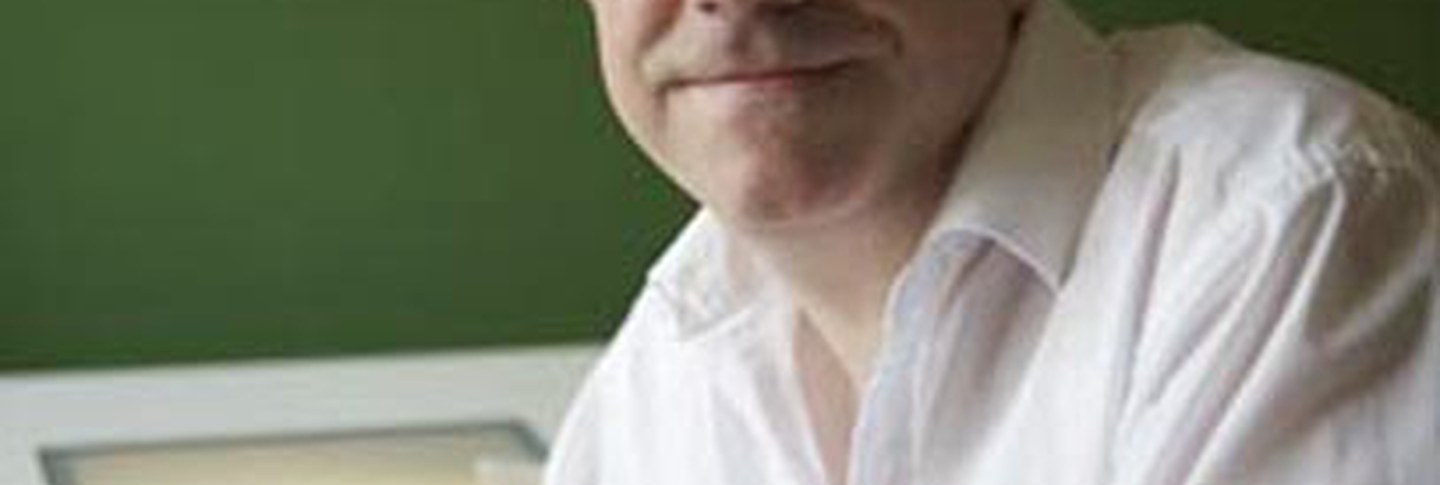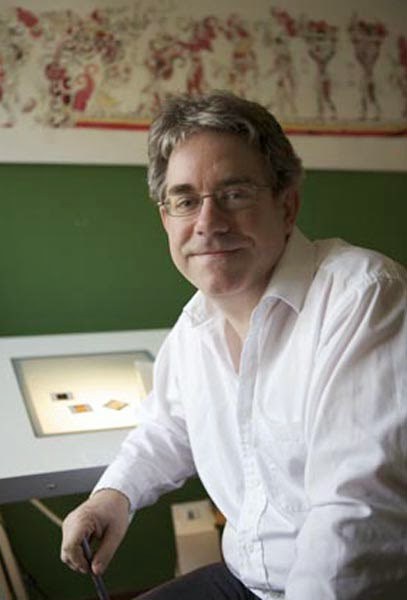David Stuart.
While his tenure at Dumbarton Oaks may have been brief, David Stuart’s short stay is balanced by the young age at which he joined the Pre-Columbian Studies program. Stuart received a Junior Fellowship during the 1983–84 academic year, the year after he graduated from high school. While junior fellowships are usually reserved for those who have secured the qualifications necessary to begin graduate-level work, the senior fellows committee made an exception for Stuart, whose achievements in deciphering Mayan hieroglyphics would later be highlighted in the 2008 PBS documentary, Breaking the Maya Code.
A number of factors conspired to lay the groundwork for David Stuart’s early interest in Pre-Columbian studies. His father, George Stuart, a Maya scholar and archaeologist who worked for National Geographic, brought his family along on Mesoamerican excavations. In an interview with National Geographic, the younger Stuart recounts a particularly memorable experience in which he visited San Bartolo in Guatemala—the site of the earliest and best-preserved Maya wall paintings ever to be found—which instilled in him a deeply rooted desire to pursue studies in the same field.
Growing up in the D.C. area afforded Stuart the opportunity to cultivate such interests. He began interning at Dumbarton Oaks during high school, cataloguing slides in the Pre-Columbian Studies department, and subsequently applied for and received a junior fellowship. Linda Schele, a renowned Maya scholar and former Pre-Columbian fellow (1975–76), wrote to Elizabeth Boone, director of Pre-Columbian Studies, recommending him to the fellowship program. She discussed an early encounter with Stuart, then twelve, during a trip to Palenque, Mexico, where his father was studying glyphs. Her initial hesitations and doubts at taking on someone so young as a mentee soon disappeared:
When they arrived, I was suffering from an injured foot and did not particularly wish to deal with a twelve year old enthusiast for glyphs so I sent him out to the back porch of Merle Robertson’s house with a drawing of the Tablet of the Sun text and said “Come back kid when you’ve figured out what it says.” To my amazement, to the utter astonishment of the Palenque community, and to his mother’s knowing grin, that twelve year old came back in twenty-four hours with a complete reading of the text, and it only took a few judicious questions from me to generate his understanding.

Stuart fondly remembers the time he spent at Dumbarton Oaks, noting that it was the first time in his life when he was able to immerse himself in academia, surrounded by those whose passions aligned with his own. During his fellowship, Stuart collaborated with Schele on a project entitled “Ancient Maya Writing,” which was to become the definitive guide to the civilization’s hieroglyphic writing system, detailing parts of speech, examining their literary style, and completing in-depth analyses. Although the planned book never materialized, the research collaboration morphed into other projects. The early eighties was the ideal time for such an undertaking, as the field was still evolving very rapidly as researchers came to a new understanding and appreciation of Mesoamerican writing as not just historical records, but as a sophisticated system of communication.
While at Dumbarton Oaks, Stuart received a MacArthur Fellowship (1984–89), which allowed him, once he moved on to study at Princeton University, to conduct fieldwork during summer expeditions to Copán, Honduras. He subsequently attended Vanderbilt University, and received his PhD in anthropology in 1995. In 1993, Stuart began teaching at Harvard University and working with the Peabody Museum. After eleven years at Harvard, Stuart moved to the University of Texas at Austin, in 2004.
Stuart has returned to Dumbarton Oaks on several occasions to take part in symposia. His most recent lecture, “The Role of Proper Names in the History of Mesoamerican Art and Communication,” was given as part of the 2008 Pre-Columbian symposium on “Scripts, Signs, and Notational Systems in Pre-Columbian America.” He discussed the way in which the need to write down individuals’ names led to the creation of writing systems in Mesoamerican civilizations, systems that, although quite different from each other, share certain similarities and functions.

Recently, in June 2015, Stuart spoke at the Pre-Columbian Society in Washington, D.C., as part of a series of lectures in honor of his late father. His talk, “The Cross Group Temples at Palenque: New Readings and Interpretations,” evaluated the role of iconography and mythology in a seventh-century king’s temple that he had encountered during his time in Palenque.
Today, Stuart continues to teach at the University of Texas as the David and Linda Schele Professor of Mesoamerican Art and Writing. His current project involves research on documenting and preserving the Hieroglyphic Stairway in Copán, which has the longest of all Maya inscriptions from the Pre-Columbian period.

